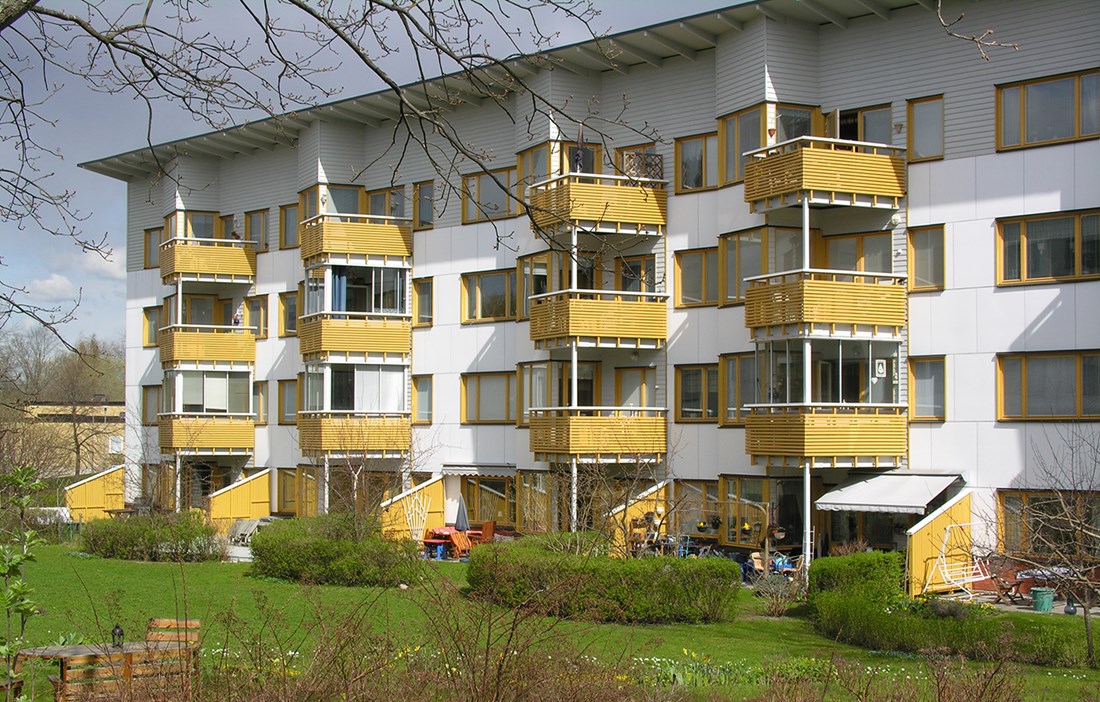| Type of building: | Multi-storey building |
| Number of floors: | 4 |
| Number of apartments: | 23 |
| Where: | Solna |
| Construction area: | 2595 |
| Completed: | 1998 |
| Architect: | Hederus Malmström Arkitekter; Per Hederus, Palle Widegren, Björn Malmström, Josef Eder |
| Constructor: | Skanska Teknik AB, Ulf Persson |
| Entrepreneur: | Skanska Sverige AB, Jonas Gustafsson, Pär Olofsson |
| Developer: | Brf Räven 23 (c/o Skanska Bygg) |
Architecture:
The building is four storeys high, with three stairwells, each with a lift, and two apartments off the stairwell on each level. On the ground floor, the apartments have patios opening out onto the garden, while the upper floors have balconies which, like the bays, are angled towards the south-east. The window openings are larger than normal. The stairwells are fully glazed. The building has a wooden structural frame and floor structure that uses Skanska’s proprietary method. The storey height is 260+45 = 305 centimetres. The stairwells and lift shafts also have a wooden frame. The roof is mono-pitched, overhanging two metres towards the south-west. The balcony floors are eight centimetres of fibre cement supported by glulam posts and beams. The balustrades are also made of wood. There are three types of apartments with 4–5 rooms and a kitchen, measuring between 87 and 97 square metres. They have an open flow between the dining area, living room and numerous small bedrooms. The apartments have wood floors as standard in all rooms. The WC and bathroom have tiled floors. All the bathrooms have windows and contain a washing machine and tumble dryer.
There was something of a challenge in trying to get the exterior of the building to reflect the construction method by cladding the façades in wood. It transpired that the regulatory system was not ready for this. For fire safety reasons, the façades were clad in white fibre cement panels (Glasal), a material whose lightness sits well with the construction technique while also taking up the theme of the surrounding buildings with their Eternit façades. Wood was, however, used in all the places it could be: at the top, in and around the balconies, in the stairwells. The windows, external screens and balcony balustrades are also wood, painted in a bright ochre colour. Nearest the ground, the white panels meet a plinth of red bricks, placed on their edge.
Construction:
The system of ready-cut timbers packed up by apartment has proven to work extremely well. One of the reasons why the production time can be so short, is that there are no problems drying out construction moisture. The whole building was erected storey by storey. Another advantage was that the installers of the services practically had free rein to work in the walls and floors. Once the walls of a storey had been put up and the floor structure laid, they had the whole floor to work on, which caused minimal disruption to their work.

